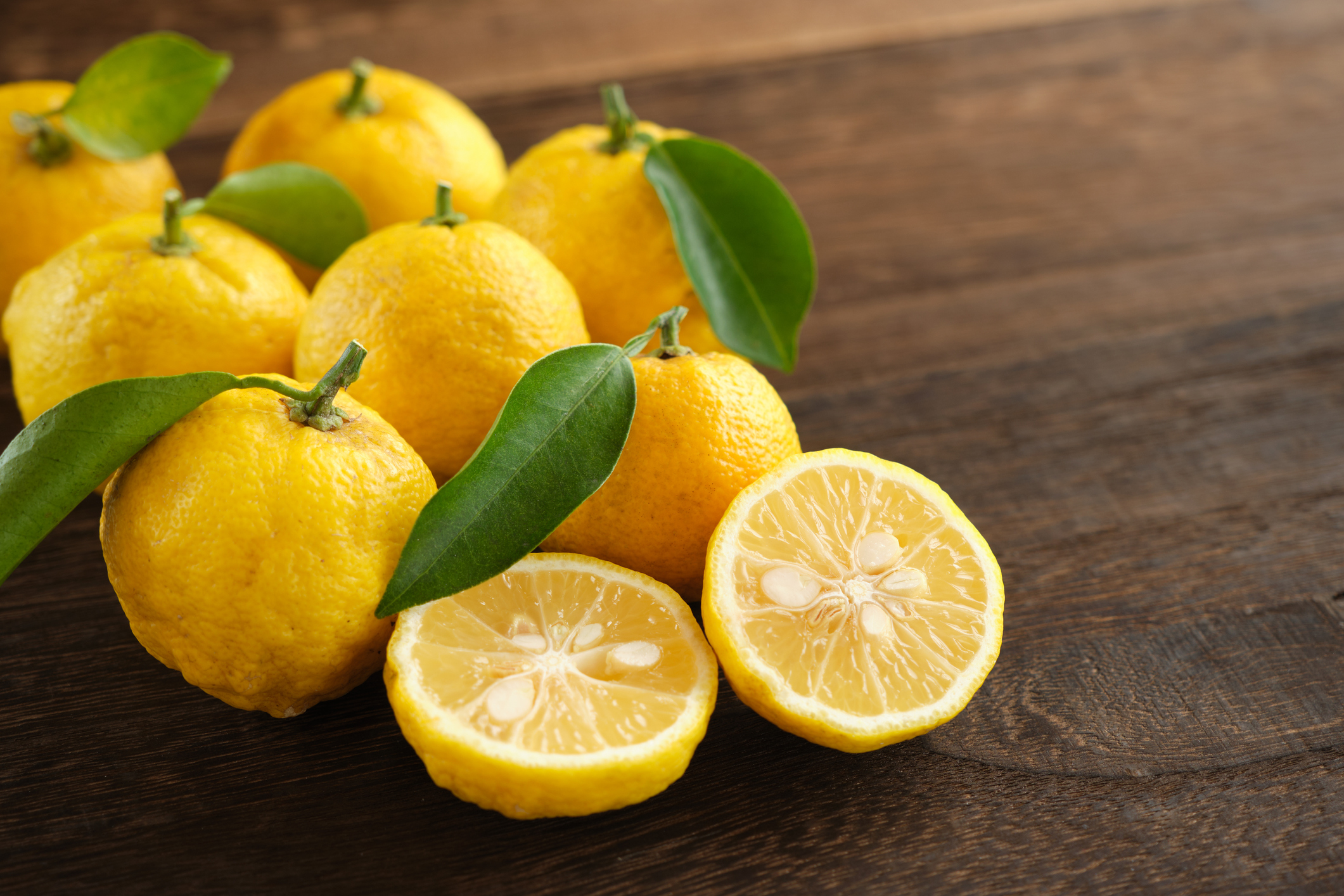There are over 1,000 different citrus fruits out there — and you owe it to yourself to try something a little different
Once, there were just four types of wild citrus, but farmers and gardeners over the centuries have selected for wonderful variety and abundance, says Charles Quest-Ritson.


Grapefruit used to be rare and exotic. My parents served them at dinner parties — I rather think they had a maraschino cherry in the middle. My father saved the seed and sowed it, too, although they never germinated — grapefruit need a higher temperature than we ever had in the vinery or greenhouse. But my family finds the temptation to grow fruit trees from seed is hard to resist.
When my diplomat daughter was working in Japan, we discovered the aromatic delights of yuzu. These are among the smaller citrus fruits, but their skin — the only part worth eating — is deliciously fragrant to nibble at the end of a meal. Yuzus were little known in Europe at the time, so we brought back some pips; they germinated very freely and, within a year or two, we had some to give away to friends. That was nearly 20 years ago and, when we meet them now, those friends invariably tell me that theirs has not yet begun to fruit. Nor have ours, but it is difficult to throw out plants over which one has fussed for so long.
A French nurseryman called Michel Bachès, who specialises in unusual members of the citrus family, told me that I need to buy a named cultivar chosen for its early fruiting. I wish I had taken his advice, now that importing plants from the European mainland is so difficult. Yuzus are available from several English nurseries, but no English nursery can match the number of citrus cultivars — some 1,000 — that the Bachès nursery sells.
That figure — 1,000 different citrus fruits — is principally the result of centuries of hybridisation by Chinese and Japanese nurserymen. The oranges, tangerines, lemons and grapefruit that we eat today are all hybrids, descended from crosses between four ancestral wild species. We all know what an orange or a lemon smells and tastes like, but it comes as a surprise to realise that those distinctive features are the result of intensive human selection. Modern growers breed and select new varieties for their easiness to peel, their resistance to bruising and their shelf-life — or their fridge-life if, like Americans, you keep all fruit artificially cool.
I grow — or have grown — four unusual citrus fruits. (It is a pity that the English language does not have an easy collective noun for them as do the French agrumes and Italian agrumi.) The best among my citrus cultivars is Meyer’s lemon, which is very short-growing (3ft) and easy in a cool greenhouse. The fruits are lemon-shaped, but orangey inside and not as sour as proper lemons — delicious with China tea.

China tea is not the same as Earl Grey, but the latter owes its special flavour to the addition of bergamot oil. This comes from the rugged skin of the ugly greenish bergamot orange, the cultivation of which is a major industry in southern Italy. My plant came from a Dutch-run nursery near Catania, together with another agrume grown for its aromatic skin — the citron, which looks like a large, shaggy lemon. Citrons are one of the aboriginal species from which most citrus fruits are descended.
Its name creates confusion among francophones, because citron is the French word for lemon. Stick with the Italian name cedro or the Latin Citrus medica. Its thick skin is usually candied, but the smell of the peel is exhilarating, so we always grate their skins for their zest. That said, I must confess that neither our bergamot nor our cedro ever had as many fruit on it as when we first bought it. And both are now dead…
Exquisite houses, the beauty of Nature, and how to get the most from your life, straight to your inbox.
Citrus fruits require varying degrees of warmth to grow well and bear good, regular crops. All are greenhouse plants in our climate, but there is one species that is hardy in much of Britain. It used to be known as Poncirus trifoliata — or Japanese Bitter Orange — but has recently been admitted to the genus Citrus by the know-all botanists of the Royal Horticultural Society.

The bush is a tangle of green twigs and large thorns that help the insignificant leaves to photosynthesise and create an impenetrable, deer-proof hedge of up to about 6ft high — taller in hot climates. The fruits are small, green and aromatic, but very bitter and full of seeds. The flowers, however, are just like orange or lemon flowers and smell as sweetly.
My grandson is now trying to germinate grapefruit seeds. I have told him to start them off by the Aga. If he succeeds, he will undoubtedly offer a little plant to me and I shall do my best to keep it alive.
When it reaches fruiting size, I shall ask him over to sample his handiwork. But I probably won’t put a maraschino cherry in the middle.
Charles Quest-Ritson wrote the RHS Encyclopedia of Roses.
Charles Quest-Ritson is a historian and writer about plants and gardens. His books include The English Garden: A Social History; Gardens of Europe; and Ninfa: The Most Romantic Garden in the World. He is a great enthusiast for roses — he wrote the RHS Encyclopedia of Roses jointly with his wife Brigid and spent five years writing his definitive Climbing Roses of the World (descriptions of 1,6oo varieties!). Food is another passion: he was the first Englishman to qualify as an olive oil taster in accordance with EU norms. He has lectured in five languages and in all six continents except Antarctica, where he missed his chance when his son-in-law was Governor of the Falkland Islands.
